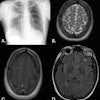
CT has an important supportive role in assessing COVID-19 and its complications, but justification is paramount and the polymerase chain reaction (PCR) test remains the gold standard for diagnosis, according to Prof. Dr. Gerald Antoch and colleagues at the German Röntgen Society (DRG).
"For a clinically symptomatic patient, with initially negative PCR and clinical consequences, CT can help diagnose COVID-19. It is important to confirm the CT finding by sequential reverse transcription PCRs (RT-PCRs)," noted Antoch, the DRG president, in a statement released on 8 April.
 Gerald Antoch is professor and chair of radiology at Düsseldorf University Hospital.
Gerald Antoch is professor and chair of radiology at Düsseldorf University Hospital.The DRG noted that CT should only be used in specific circumstances, and its use should always be justified by indications. Radiologists must remain aware of CT's possibilities and limits, the society added.
The DRG's Thoracic Diagnostics Working Group provided the following guidance:
- A chest CT scan can support diagnosis at an early stage only if COVID-19 infection is suspected due to clear respiratory symptoms (e.g., shortness of breath) that necessitate hospitalization and a negative RT-PCR result is obtained.
- If COVID-19 is suspected, CT should be carried out as a native thin-slice CT scan with a low-dose protocol, unless further differential diagnoses indicate contrast agent administration. The radiological findings should be categorized and structured in a standardized manner.
"For the use of CT, the justifying indication has to be based not only on the severity of the disease but also on the clinical relevance for the further clinical management of the individual patient," noted Prof. Dr. Jens Vogel-Claussen, chair of the working group.
The DRG also pointed out that because CT can depict changes that are not specific to the diagnosis of COVID-19 and occur in other viral pneumonia, it can contribute to the assessment of patients' individual prognosis in an interdisciplinary context. However, it should not be carried out as a screening test or for triage in patients with nonsevere or no symptoms.
CT's most important role in the context of the pandemic is the diagnosis of pneumonia-associated complications, as well as the assessment of the initial extent of the disease and its course, the society stated, adding that CT also contributed to the clinical assessment of very severe cases.
Furthermore, a negative CT diagnosis does not rule out COVID-19, according to the DRG. Conversely, a CT scan with an initial negative PCR result can aid in making a suspected diagnosis, which must then be confirmed by serial PCR tests.



















